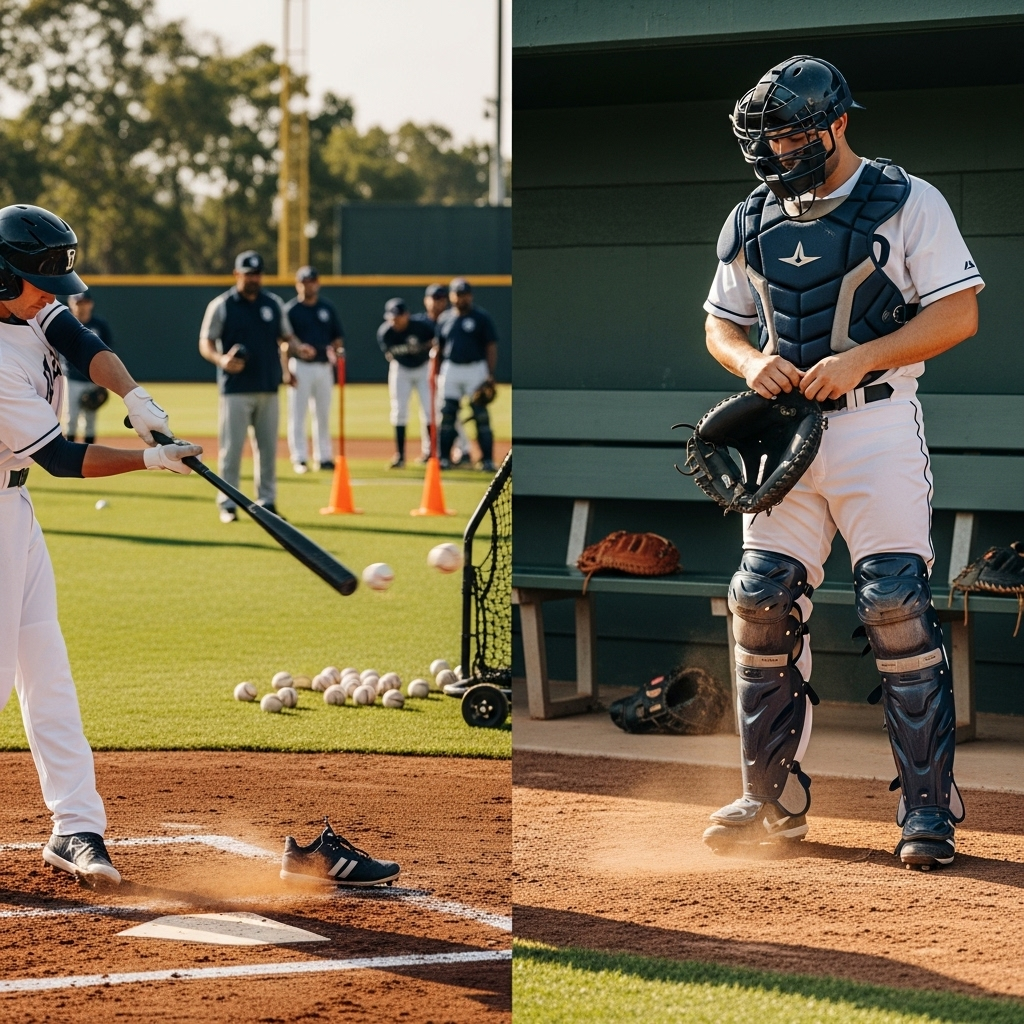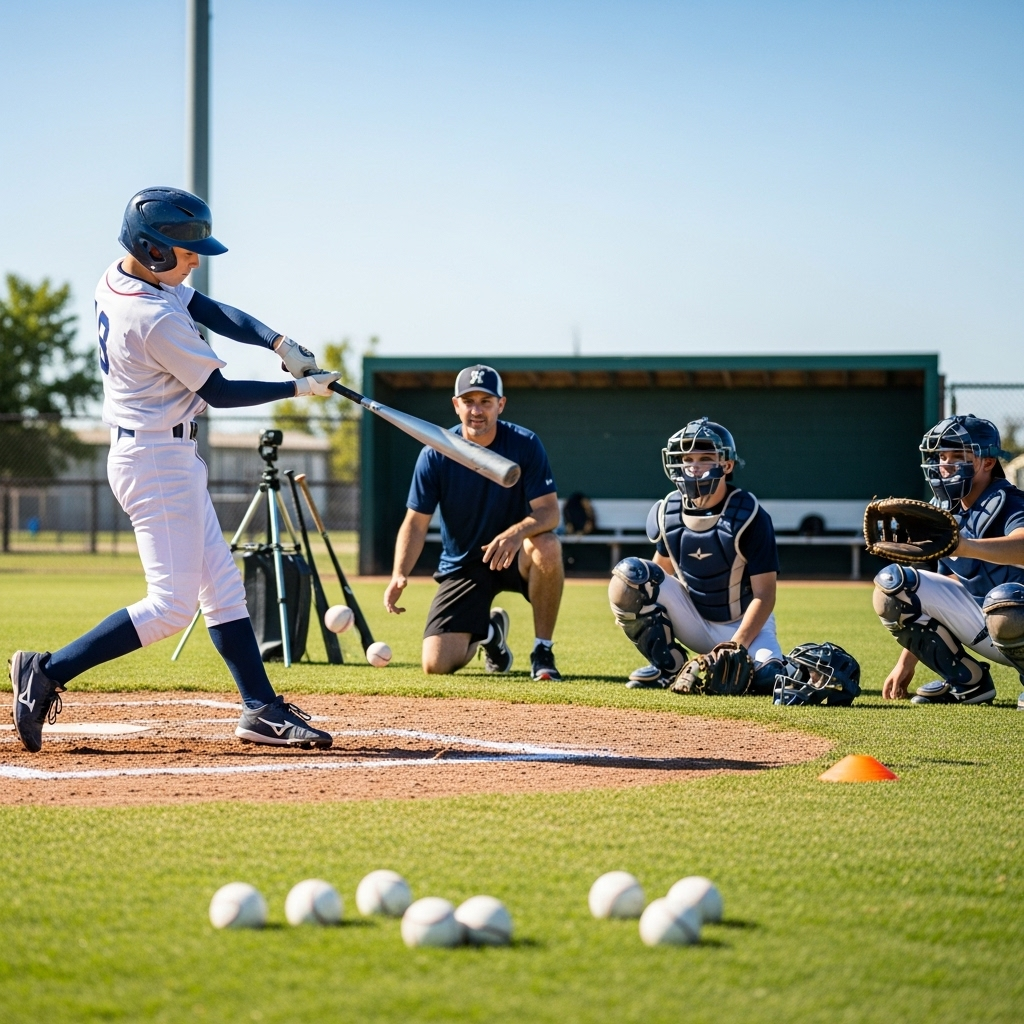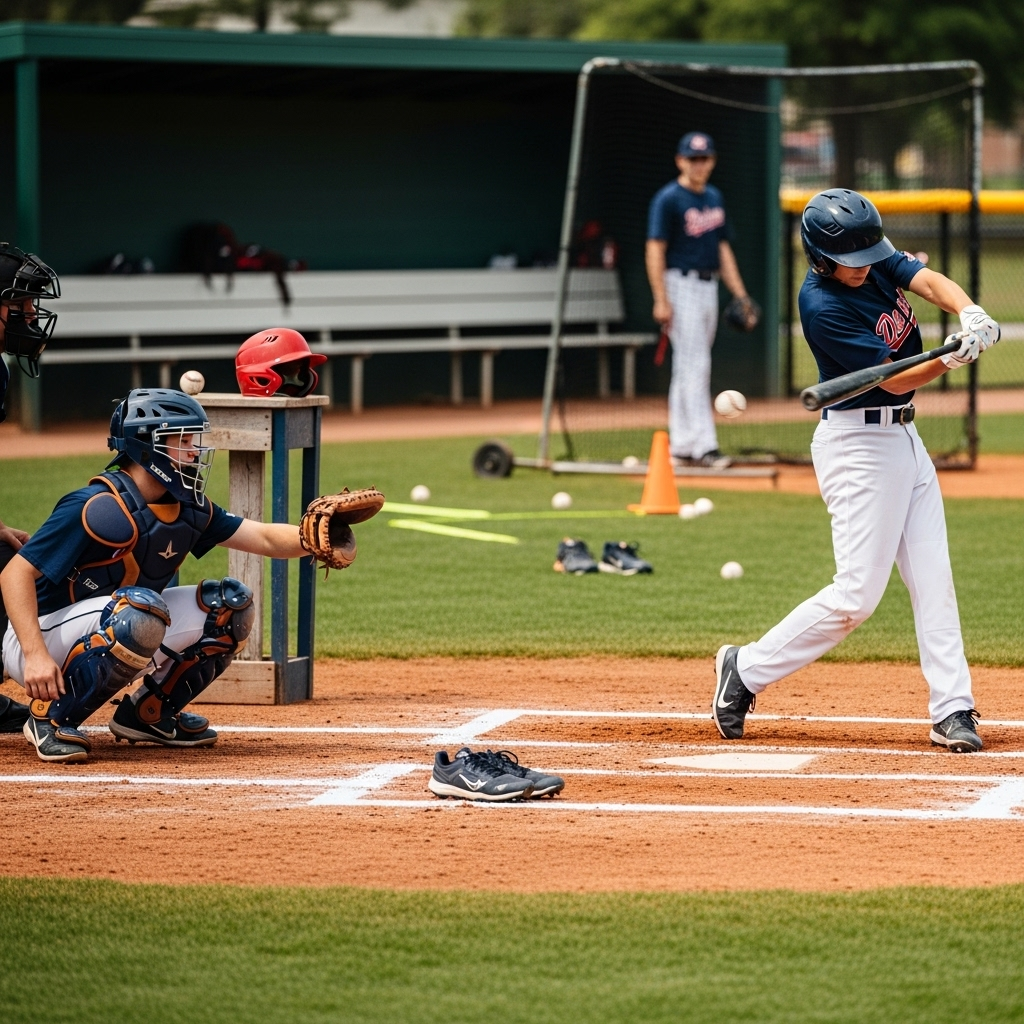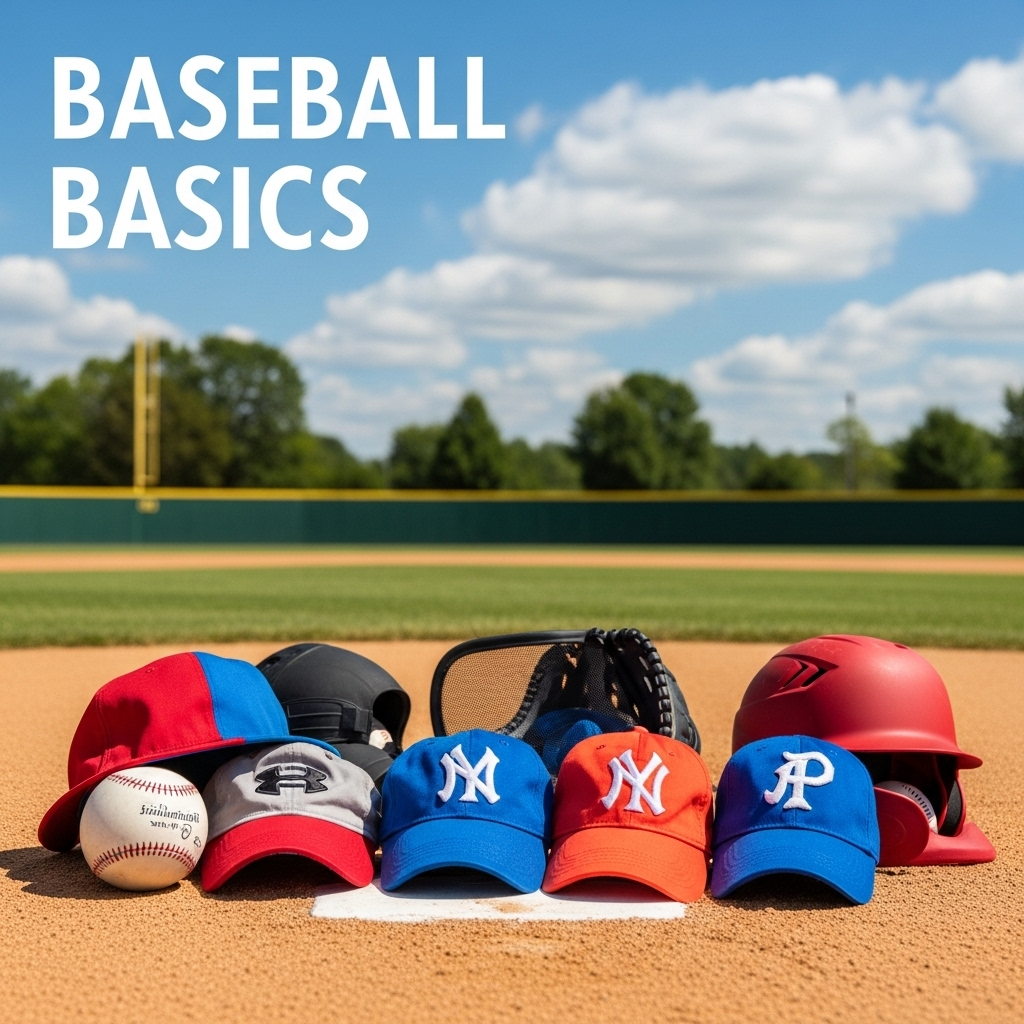Quick Summary: Get your young slugger started right with this beginner’s guide to baseball basics! Learn about essential equipment, fundamental skills like throwing and hitting, and simple training tips to build confidence and a love for the game. We’ll cover everything you need to know to make baseball fun and accessible for kids.
Baseball Basics For Kids: Your Essential Guide to Getting Started on the Diamond
Starting baseball can feel like a big step, but for kids, it’s often more about fun and learning than big league plays! Sometimes figuring out what gear you need, how to hold a bat, or even how to throw can seem a little confusing. Don’t worry! This guide will break down all the essential baseball basics for kids. We’ll walk you through everything from the gear that makes the game safe and fun to the core skills that every young player needs to know. Get ready to step onto the field with confidence!
The Must-Have Baseball Gear for Young Players
Choosing the right equipment is super important for safety and for making the game enjoyable. Think of it like getting your superhero costume ready – each piece helps you play your best! Here’s a rundown of the essential gear every young baseball player needs.
The Glove: Your First Line of Defense (and Offense!)
A baseball glove isn’t just any glove; it’s designed to help you catch a fast-moving ball. For kids, a smaller, lighter glove is usually best.
- Size Matters: Gloves come in different sizes. For younger kids (ages 5-8), look for gloves around 9 to 10 inches. Older kids (9-12) might need gloves from 10.5 to 11.5 inches.
- Material: Most beginner gloves are made of leather or synthetic leather. Leather is more durable but can take longer to break in. Synthetic leather is lighter and easier to use right away.
- Webbing: This is the part between the thumb and index finger. A deeper web helps secure the ball.
Breaking in Your Glove
A new glove can be stiff! To make it more flexible:
- Play Catch: The best way is to simply use it! Catching balls will naturally soften it.
- Glove Oil or Conditioner: Apply a small amount of glove oil or conditioner. Work it into the leather.
- The “Glove Trick”: Some players put a baseball in the pocket of the glove and wrap it tightly with a rubber band or place it in a heavy book overnight. This helps shape the pocket.
The Baseball Bat: Finding Your Sweet Spot
The bat is what helps you hit the ball! For kids, using a lighter and shorter bat is key to developing good swing mechanics.
- Length and Weight: Bats are measured by length and weight. For a child, you want a bat that is light enough for them to swing with control. A good rule of thumb is that a player can hold the bat out to their side in a T-shape for about 10 seconds.
- Material: Youth bats are often made of aluminum alloy or composite materials. Aluminum is usually more affordable and durable. Composite bats can offer a larger “sweet spot” but are often more expensive.
- Bat Regulations: Different leagues might have specific rules about what kinds of bats are allowed (e.g., USA Baseball or BBCOR standards). Always check with your league or coach.
A handy chart can help you pick the right bat size:
| Player’s Height | Recommended Bat Length (Inches) | Recommended Bat Weight (Ounces) |
|---|---|---|
| 3’0″ – 3’4″ | 24-26 | 14-17 |
| 3’5″ – 3’9″ | 26-28 | 16-19 |
| 3’10” – 4’2″ | 27-29 | 18-21 |
| 4’3″ – 4’7″ | 29-31 | 20-23 |
| 4’8″ and taller | 30-32 | 22-25 |
Catcher’s Gear: The Guardian of Home Plate
If your child is interested in playing catcher, specialized gear is a must for safety. Catchers face fast pitches and foul balls, so protection is vital.
- Catcher’s Helmet/Mask: This protects the face, head, and throat.
- Chest Protector: Covers the chest and abdomen to absorb impact.
- Leg Guards: Protect the shins and knees.
- Catcher’s Mitt: Larger and more padded than a fielder’s glove, designed for scooping pitches.
Other Essential Items:
Beyond the big three, don’t forget these:
- Baseball Pants: Durable pants that cover the legs.
- Baseball Cap: For sun protection and team spirit.
- Baseball Cleats: These shoes have special spikes on the bottom to help with traction on the field. Make sure they are appropriate for the field type (e.g., metal or molded).
- Batting Helmet: Always wear one when batting or running the bases, even in practice!
- Athletic Cup (for boys): Essential for protection when batting or catching.
- Water Bottle: Staying hydrated is key!
The Fundamental Skills: Throwing, Catching, and Hitting

Once the gear is ready, it’s time to learn the core skills. These are the building blocks of baseball, and practicing them makes the game much more exciting.
Mastering the Throw: Accuracy and Power
Throwing a baseball correctly is more than just flicking your wrist. It involves your whole body for accuracy and speed.
- Grip: Hold the ball with your fingertips, not deep in your palm. The seams can act as guides. For a four-seam grip, place your index and middle fingers across the widest part of the seams, or “horseshoe.”
- Stance: Stand with your feet shoulder-width apart, facing slightly towards your target.
- Arm Action: Bring the ball back, with your elbow bent, and step forward with the opposite foot. As your arm comes forward, rotate your body and snap your wrist.
- Follow-Through: After releasing the ball, let your arm swing across your body. This helps with control and prevents injury.
“A good throw starts with a good grip and ends with a full follow-through. Focus on smooth, controlled movements.”
Catching the Ball: Soft Hands, Big Results
Catching requires focus and technique. Learning to receive the ball properly is crucial to making outs and preventing errors.
- Get in Front: Always try to get your body in front of the ball.
- Use Two Hands: When the ball is low, bend your knees and put your glove down. Use your bare hand to cover the ball once it’s in the glove.
- For High Balls: Reach up with your glove and use your bare hand to trap the ball against your glove.
- “Soft Hands”: This means letting your hand and glove give a little as the ball enters, rather than being stiff. This absorbs the impact and prevents the ball from bouncing out.
Hitting the Ball: Swing with Confidence
Hitting is often the most exciting part for kids! The goal is to make solid contact with the ball and send it into play.
- Stance: Stand with your feet about shoulder-width apart on each side of home plate. Your knees should be slightly bent, and you should be balanced.
- Grip: Hold the bat with both hands, with your dominant hand on top. Your knuckles should be roughly lined up.
- The Swing:
- Load: As the pitcher starts to throw, shift your weight back slightly, perhaps lifting your front foot a little.
- Stride: Step towards the pitcher as you begin to swing.
- Contact: Swing the bat level through the strike zone, keeping your eye on the ball. Aim to hit the ball out in front of your body.
- Follow-Through: Let the bat continue its natural arc after hitting the ball.
- Eye on the Ball: This is the golden rule of hitting. Watch the ball all the way from the pitcher’s hand to your bat.
Baseball Training Drills for Young Players
Practice makes perfect, and these simple drills will help young players improve their skills in a fun way. Consistency is key!
Throwing and Catching Drills
1. The “Mirror Drill”: Stand a few feet apart with a partner. Throw the ball back and forth, focusing on throwing accurately and catching with soft hands. Gradually increase the distance as you get more comfortable.
2. “Target Practice”: Set up a target (like a bucket or hula hoop) and practice throwing to it from different distances. This helps with aiming.
3. “Pop-Up Drill”: Have a coach or parent gently toss balls into the air. Practice tracking them with your eyes and catching them.
Hitting Drills
1. “Tee Work”: This is a fantastic drill for beginners. Place a batting tee at different heights and locations around the strike zone and practice swinging at the stationary ball. This helps develop proper swing mechanics and makes it easier to focus on hitting the ball squarely.
2. “Soft Toss”: A partner stands to the side and gently tosses balls underhand to the batter. This is a step up from tee work, introducing a moving ball while still allowing for controlled swings.
3. “Wiffle Ball Batting”: Using a plastic Wiffle ball and bat is a great way to practice swinging without fear of getting hit.
Fielding Drills
1. “Ground Ball Basics”: Have a partner roll or hit ground balls towards the player. The player should practice getting their body behind the ball, keeping a low athletic stance, and scooping the ball into their glove.
2. “Fly Ball Focus”: Practice running to catch fly balls hit in front, and tracking balls hit over the head.
Understanding Baseball Positions and Their Roles

Baseball has distinct positions, each with specific jobs. Knowing these can help kids understand the game better and where they might fit in.
Here’s a quick look at the main positions:
- Pitcher: Throws the ball to the batter.
- Catcher: Receives pitches from the pitcher and defends home plate.
- First Baseman: Primarily fields ground balls near first base and catches throws to get outs.
- Second Baseman: Covers second base and fields balls hit to the right side of the infield.
- Third Baseman: Defends “the hot corner” (third base) and fields most ground balls hit to the left side of third base.
- Shortstop: Fields balls hit to the left side of second base and covers second base.
- Outfielders (Left, Center, Right): Catch fly balls and field ground balls hit into the outfield.
Safety First on the Baseball Field
Safety is the most important part of any sport, especially for young athletes. Following simple safety rules can prevent common injuries.
- Always wear a batting helmet when batting, running bases, or on deck.
- Use proper protective gear, especially if playing catcher.
- Learn to throw and swing with proper technique to avoid arm and shoulder injuries.
- Be aware of your surroundings on the field.
- Warm up properly before practices and games.
- Stay hydrated, especially in warm weather.
- Listen to your coaches! They are there to help you play safely and improve.
For more official safety guidelines, the CDC also provides excellent safety tips for youth baseball.
Frequently Asked Questions About Baseball for Kids

Q1: What is the most important piece of equipment for a beginner baseball player?
A1: The most crucial piece of equipment is a properly fitting batting helmet. It protects the head from impacts, which can happen from pitched balls, thrown balls, or collisions. Safety always comes first!
Q2: How do I know if a bat is the right size for my child?
A2: A bat is the right size if your child can comfortably swing it with control. They should be able to hold the bat out to their side for about 10 seconds without their arm dropping. For more precise guidance, refer to height-to-length charts specific to youth baseball.
Q3: My child is afraid of getting hit by the ball. What can I do?
A3: This is common! Start with drills that use softer balls like Wiffle balls or foam balls. Gradual exposure, positive reinforcement, and ensuring they always wear their helmet can build their confidence over time. Focusing on the “eye on the ball” hitting tip helps too, as it encourages them to watch the ball’s path.
Q4: How much practice is too much for a young player?
A4: Overtraining can lead to burnout or injury. For young players, short, focused, and fun practice sessions are best. Consistency is more important than long, grueling practices. Quality over quantity!
Q5: What’s the difference between a youth baseball and a regular baseball?
A5: Youth baseballs are often slightly smaller and lighter than regulation adult baseballs. This makes them easier for young players to grip, throw, and hit. Little League baseballs, for example, are designed specifically for younger players.
Q6: Should my child play different positions, or specialize early?
A6: For young players, it’s highly beneficial to try different positions. This helps them develop a broader understanding of the game, improve various skills, and discover what they enjoy most. Early specialization is generally not recommended.
Conclusion: The Journey Begins on the Diamond
Embarking on the baseball journey with your child is an exciting adventure filled with learning, growth, and plenty of fun. By understanding the essential equipment, mastering the fundamental skills of throwing, catching, and hitting, and incorporating consistent, fun training drills, you’re setting your young player up for success. Remember that safety is always paramount, and fostering a positive and encouraging environment will help nurture a lifelong love for the game.
As your child grows and develops their skills, they’ll naturally explore different aspects of baseball. Whether they dream of hitting home runs, making spectacular catches, or becoming a pitching ace, the basics covered here are the foundation for all those future achievements. So, get out there, practice those drills, celebrate the small victories, and most importantly, enjoy the game of baseball together! The diamond awaits!

